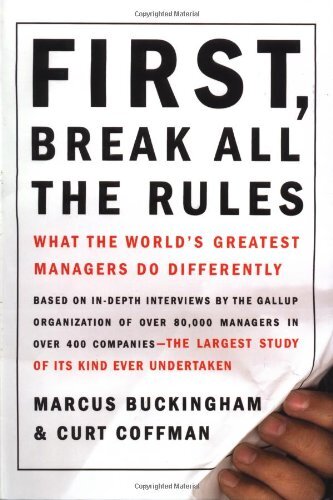Contents
- Short Selling in Spread Betting
- Get the 5-minute roundup you’ll actually read in your inbox
- What Is a Short (or Short Position)
- Short Selling Stock: Overview & Examples

Most broker-dealers will automatically close out a short position when it reaches a certain point to prevent the investor from losing more money than they have in their account. Conversely, a trader can also make money when he thinks a stock is going to decrease in price. Instead of buying low and selling high, a trader can “Sell high and buy low.” In this instance, a broker will actually loan the trader shares of stock that the trader then sells.

Let’s go through an example of shorting 10 shares of Company XYZ stock at $50.00 each. With tastytrade, you can short stocks using your margin account with ‘The Works’ trading level. If you don’t already have one, you can get started and create a tastytrade account. If you’re already part of the tastynation, and you have a margin account with ‘The Works’ permissions, all you need to do log in.
Retail investors can short a stock if they choose to do so, while some hedge funds promote themselves as long/short, holding significant Short positions. If retail investors decide to short a stock, they require an online brokerage that allows them to borrow shares. In most market conditions there is a ready supply of securities to be borrowed, held by pension funds, mutual funds and other investors. In a traditional stock purchase, the most you can lose is the amount you paid for the shares, but the upside potential is theoretically limitless. A short sale is the sale of a stock that an investor does not own or a sale which is consummated by the delivery of a stock borrowed by, or for the account of, the investor.
Shorting the market is a trading strategy where you profit off short-sale positions based on the stock market as a whole. Short positions are the opposite of traditional, or long, positions. When you hear someone say, “Buy low and then sell high,” they are talking about taking a long position.

Using margin provides leverage, which means the trader did not need to put up much of their capital as an initial investment. If done carefully, short selling can be an inexpensive way to hedge, providing a counterbalance to other portfolio holdings. Apart from speculation, short selling has another useful purpose—hedging—often perceived as the lower-risk and more respectable avatar of shorting. The primary objective of hedging is protection, as opposed to the pure profit motivation of speculation. Hedging is undertaken to protect gains or mitigate losses in a portfolio, but since it comes at a significant cost, the vast majority of retail investors do not consider it during normal times. As potential losses on a short sale are unlimited, a margin call effectively limits how much loss your position can sustain.
If the price of a shorted security begins to rise rather than fall, the losses can mount up quickly. In fact, since the price of the security has no ceiling, the losses on a short position are theoretically unlimited. Given this inherent riskiness and the complexity of the transaction, shorting securities is generally recommended only for more advanced traders and investors. In common practice, short sellers borrow shares of stock from an investment bank or other financial institution, paying a fee to borrow the shares while the short position is in place.
Short Selling in Spread Betting
Although controversial, https://business-oppurtunities.com/ selling is very integral in creating efficient markets. Shorting stocks creates liquidity in the markets by ensuring there are always enough sellers for long positions to be exited efficiently. Short selling also contributes to the fair price discovery of the underlying asset and can also help investors to allocate capital effectively in their portfolios.

Tastytrade has entered into a Marketing Agreement with tastylive (“Marketing Agent”) whereby tastytrade pays compensation to Marketing Agent to recommend tastytrade’s brokerage services. The existence of this Marketing Agreement should not be deemed as an endorsement or recommendation of Marketing Agent by tastytrade. Tastytrade and Marketing Agent are separate entities with their own products and services. Long Butterfly SpreadA long butterfly spread is a neutral position that’s used when a trader believes that the price of an underlying is going to stay within a relatively tight range. No opinion given in this material constitutes a recommendation by City Index or the author that any particular investment, security, transaction or investment strategy is suitable for any specific person. The material has not been prepared in accordance with legal requirements designed to promote the independence of investment research.
Get the 5-minute roundup you’ll actually read in your inbox
A short seller borrows from a lender 100 shares of ACME Inc., and immediately sells them for a total of $1,000. However, if the stock soars to $100 per share, you’ll have to spend $10,000 to buy the 100 shares back. That will give you a net loss of $9, nine times as much as the initial proceeds from the short sale. Unfortunately, short selling gets a bad name due to the practices employed by unethical speculators. These unscrupulous types have used short-selling strategies and derivatives to artificially deflate prices and conduct bear raids on vulnerable stocks. Most forms of market manipulation like this are illegal in the U.S. but still happen periodically.

As we saw with stocks like Gamestop and AMC in January 2021, shorting can have broad implications in the market, creating huge losses for some and huge gains for others. There are several differences between taking long and short positions on stocks. Some of these include where the risks and rewards lie, the potential for loss, and the time frame. As previously mentioned, investors expect a stock’s price to rise when taking a long position and fall when taking a short position. When taking a long position, the maximum potential loss is equal to the entirety of the investment, while the maximum potential profit is theoretically unlimited.
What Is a Short (or Short Position)
There are various reasons why investors expect a stock price to decline, including concerns about the company’s financial health, an industry-wide decline, or general pessimism about the market. Learn about short selling stocks, including how to open a short position in a stock. Explore the reasons for short sales and the pros and cons of short selling.
- Today the term “Going Short”, or just “shorting”, has now been adopted in the trading world, and it means selling an instrument.
- Unlike a dividend, voting rights cannot legally be synthesized and so the buyer of the shorted share, as the holder of record, controls the voting rights.
- Later the short-seller needs to return the shares they borrowed, and before doing so they will have to buy them back.
- The investor will lose money if the security price goes up instead of down.
- Our editors and reporters thoroughly fact-check editorial content to ensure the information you’re reading is accurate.
career articles selling stocks is the act of selling securities not owned by the seller in the hope of repurchasing the same security at a lower price and returning it to the lender. When investors open a short position on a stock, they expect the stock’s price to fall. This is the opposite of a long position, which is when an investor buys a stock with the hope that its price will rise. Shorting stocks can be done for a number of reasons, including to profit from a decline in stock prices, to hedge against a decline in the price of an owned asset, or to pairs trade. Brokers typically require investors to have a margin account to open a short position.
What is Shorting a Stock?
A similar issue comes up with the voting rights attached to the shorted shares. Unlike a dividend, voting rights cannot legally be synthesized and so the buyer of the shorted share, as the holder of record, controls the voting rights. The owner of a margin account from which the shares were lent agreed in advance to relinquish voting rights to shares during the period of any short sale. To sell stocks short in the U.S., the seller must arrange for a broker-dealer to confirm that it can deliver the shorted securities. Brokers have a variety of means to borrow stocks to facilitate locates and make good on delivery of the shorted security.
Short Selling main FAQs
When short selling, you open a margin account, which allows you to borrow money from the brokerage firm using your investment as collateral. Just as when you go long on margin, it’s easy for losses to get out of hand because you must meet the minimum maintenance requirement of 25%. If your account slips below this, you’ll be subject to amargin call and forced to put in more cash or liquidate your position. When it comes time to close a position, a short seller might have trouble finding enough shares to buy—if a lot of other traders are also shorting the stock or if the stock is thinly traded. Conversely, sellers can get caught in a short squeeze loop if the market, or a particular stock, starts to skyrocket. Generally, short selling is a bearish investment method that involves the sale of an asset that is not held by the seller but has been borrowed and then sold in the market.
At this point, the trader has “sold short” the stock and believes the price is going to be lower. When the price has fallen, the trader buys the stock at a lower price and “covers” his “short” position. The trader then takes the shares that he just bought and returns them to the broker from whom he borrowed the shares. It generally involves selling borrowed shares of a stock with the belief that the price will drop, at which point you’d buy shares at a lower price to repay what you borrowed .
It’s even been implied that short-sellers are almost unpatriotic for not supporting publicly traded companies. Having a “long” position in a security means that you own the security. Investors maintain “long” security positions in the expectation that the stock will rise in value in the future. Even though short-selling is more complicated than simply going out and buying a stock, it can allow you to make money when others are seeing their investment portfolios shrink. At first glance, you might think that short-selling would be just as common as owning stock. Short selling occurs when an investor borrows a security, sells it on the open market, and expects to buy it back later for less money.
He has covered investing and financial news since earning his economics degree from the University of Maryland in 2016. Sam has previously written for Investopedia, Benzinga, Seeking Alpha, Wealth Daily and Investment U, and has worked as an editor for Investment U, Wealth Daily and Haven Investment Letter. Volatility profiles based on trailing-three-year calculations of the standard deviation of service investment returns. As a final thought, an alternative to shorting that limits your downside exposure is to buy a put option on a stock. Samantha Silberstein is a Certified Financial Planner, FINRA Series 7 and 63 licensed holder, State of California life, accident, and health insurance licensed agent, and CFA. She spends her days working with hundreds of employees from non-profit and higher education organizations on their personal financial plans.







Leave a reply
You must be logged in to post a comment.